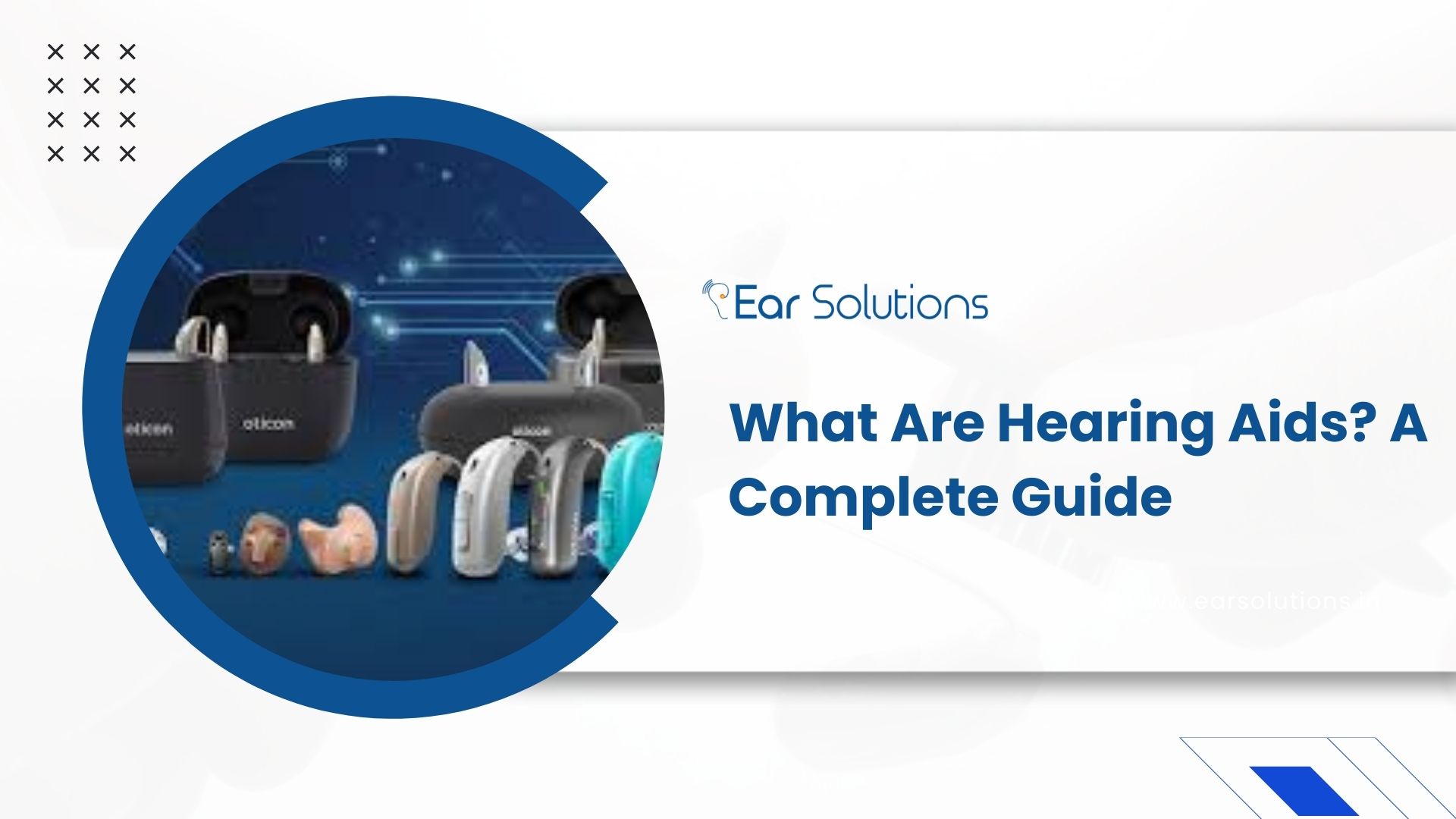
What Are Hearing Aids? A Complete Guide
Hearing plays a vital role in how we connect with the world, and when hearing loss begins to affect communication, relationships, and quality of life, hearing devices can make a life-changing difference. But what are hearing aids, how do they work, and who might benefit from using one? This blog post covers all of your questions in detail.
Table of Contents
Definition Of Hearing Aids
Hearing aids are tiny electronic machines that, ideally, help you understand speech better if you have a hearing loss. Unlike loudspeakers, which just make things louder, modern hearing devices are intelligent pieces of technology that process sound to reduce the impact of background noise & improve clarity of speech.
The typical hearing aid is composed of four basic components:
- The first one is a microphone that records the ambient sounds.
Then there is an amplifier that provides sound processing and adds volume to the sound signals.
Another important component is the speaker or receiver that emits the processed sound through your ear canal.
Also, there’s a battery that runs the device, which can be disposable or rechargeable.
Modern hearing aids are discreet, lightweight, and often come with smart features like Bluetooth connectivity, AI-powered noise cancellation, and rechargeable batteries.
Introduction To The Types Of Hearing Aids
There are basically Six types of hearing aids, and they’re all made for different hearing purposes and comfort preferences:
- Behind-the-Ear (BTE) Hearing Aid: Sits behind the ear, often attached to a thin tube or earmold that goes directly into the ear canal.
- Receiver-in-Canal (RIC): Like BTEs, only much smaller, and the speaker is placed in the ear canal, where sound is more natural and clearer.
- In-the-Ear (ITE): Custom-made to fit within the outer ear.
- In-the-Canal (ITC) and Completely-in-Canal (CIC): Tiny, nearly unnoticeable options that rest either entirely or partially in the ear canal.
- Invisible-in-Canal (IIC): This smallest model is snugly placed deep in the ear canal for total discretion.
The best type is based on your degree of hearing loss, lifestyle, budget, and comfort.
How Do Hearing Aids Work?
The magic of ear machines is not simply that everything gets louder. Using advanced digital technology, these hearing aids are designed to differentiate between speech and background noise, even in challenging environments, for clear sound quality.
For example:
- In a quiet room, hearing aids focus on enhancing speech clarity.
- In noisy places like restaurants, they reduce background sounds while emphasizing the speaker’s voice.
- Some advanced models even use AI and motion sensors to adjust settings automatically as you move from one environment to another.
Benefits of Using Hearing Aids
The most obvious advantage of hearing aids is better communication, but there’s so much more to them:
Improved Social Life: More comfortable chats with family, friends, and colleagues.
More confident: Less effort to listen in noisy, group situations.
Cognitive Health: Research has shown that wearing hearing aid devices reduces the risk of dementia and cognitive decline in adults with hearing loss.
Personal Safety: More attentiveness to the surroundings—sounds such as alarms, traffic, and people's talk.
Enhanced Quality of Life: A number of users experience increased freedom, independence, and social interaction.
Who Should Use Hearing Aids?
People who have mild to moderate or moderate to severe hearing impairment are candidates for hearing aids. You may need hearing aids if you have the following symptoms:
- Asking for repetition all the time.
- Difficulty hearing conversations in noisy places.
- Adjusting the television or phone volume higher than other people want.
- Be isolated or shy away from social interaction because of a hearing problem.
- If you exhibit any of these signs, it’s crucial to get a hearing test from a certified audiologist.
Modern Features in Today’s Hearing Aids
Technology has made hearing aids smarter and more user-friendly than ever before. Some of the latest features of hearing aids include:
- Rechargeable batteries – no more frequent battery changes.
- Bluetooth streaming – directly connect with smartphones, TVs, and music devices.
- Noise reduction & speech enhancement – clearer conversations even in noisy areas.
- Tinnitus masking sounds – soothing sounds to help manage ringing or buzzing in the ears.
- App control – adjust volume and settings using your smartphone.
Conclusion
Hearing aids aren’t just about hearing better; they’re about living better. They reconnect you with your loved ones, improve your independence, and safeguard your long-term brain health. With so many sophisticated models available today, the optimal hearing aid has never been easier to find.
If you are having trouble with hearing loss, the first thing to do is to have your hearing professionally tested. There, you can browse hearing aid styles, features, and find personalized glory-hole solutions for your desires. You can connect with an expert audiologist at Ear Solutions to find an ideal hearing device to deal with hearing difficulties.
In this way, purchasing hearing aids represents far more than just an investment in health; it’s an investment in your happiness, quality of life, and long-term well-being.

